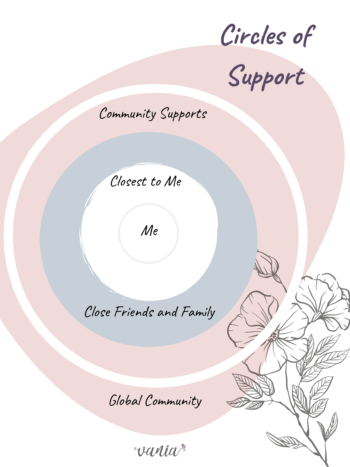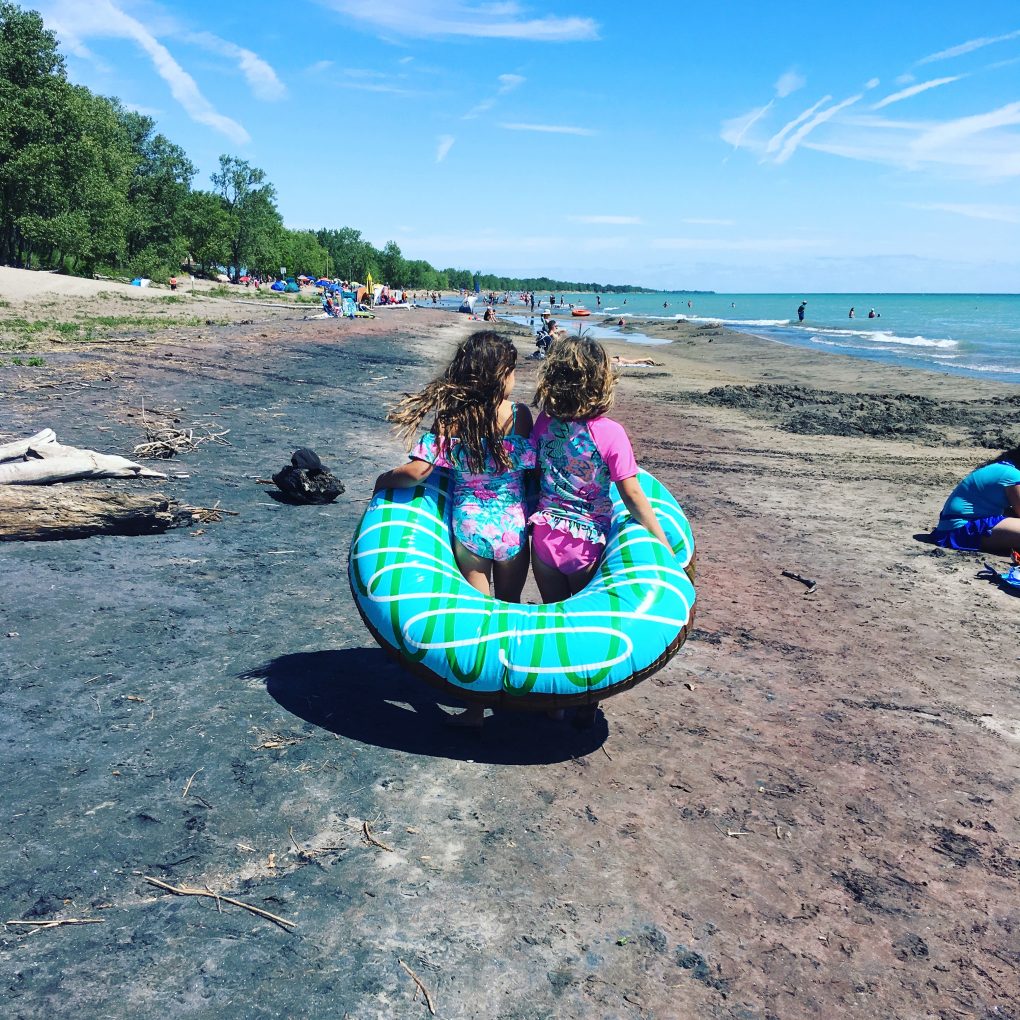Last month, i shared what Attachment Theory is, via the model of the show This is Us. I may have left you hanging with some thoughts (and possible worries) about your own attachment style. If that did leave you in limbo, i’m sorry. I also hope it motivated you to go to some links and resources to learn more about this body of work. This quiz is a great place to start to learn what your main Attachment Style is. Ironically, how we wait for support (or anything) is a sign of our Attachment Style.
This month, i’m back with some follow-up suggestions to share.
For one thing, i think it’s key to know that our attachment style is not permanent – it can be altered, repaired and heal. We also can have secure attachments with someone, and not so secure with others. In fact, there is a term for when we become securely attached – ‘Earned Secure.’ This is when we may have faced adversity in our childhood, and have become secure now, through therapy or loving relationships. This is because our attachment style is a state, not traits in us that remain stagnant. So, strategies can help us become more secure in our relationships.
There is hope yet.
In order to talk about healing our attachment wounds, we need to also check in about our boundaries. Did you know that both overly rigid boundaries AND permeable ones are responses to the same thing? Yup, it is connected to our earlier insecure attachment style: There was once a time when we didn’t feel safe, so we needed to self-protect.
The rigid boundaries and walls we make to keep people out as well as the people-pleasing response (or fawning) are both powerful adaptive strategies to feeling alone and scared.
While rigid walls were helpful as a child, they becomes an issue when we no longer need to be protective in present day relationships. It’s in our relationships now that those old tendencies and protective strategies can actually interfere with meaningful and deeper connection with others.
Fawning, self abandonment and rigid boundaries are all related to our nervous system’s need for survival, due to developmental or relational trauma and attachment wounds.
Speaking of which, i also want to point out that a relationship rupture is not the same as attachment wounds. We can make mistakes in our relationship, and repair them. Like if we forgot we agreed to something, or we are stuck in a rut. What makes it a deeper wound is when the rupture brings up old wounds that are steeped in attachment, abandonment and rejection. Or the incident is a betrayal of trust in the relationship.
Dan Siegel came up with the 4 S’s of Secure Attachment. While it’s geared for adult-child (parent/caregiver to child) relationships, it can be translated to any relationships. In order to feel SAFE, SEEN, SOOTHED and SECURE in relationship with someone else, our internal system needs to include physical security AND a felt security. If you want to learn more about his approach, here is an article with Tina Bryson, his co-author.
This is why there is a connection to our survival responses of Fight Flight Freeze Fawn and our attachment styles. A rapid flight/fight response in avoidant people sees others as a threat. So their nervous system brings out their Protectors. Avoidants do not rely on external supports but rather trust the handy work of their own Inner Firefighters.
So, what do we do? Here are some helpful strategies that may be supportive:
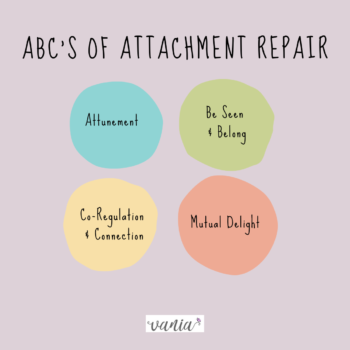 A) Attunement
A) Attunement
Attunement is about signals: In order to know how we feel with others, we need to first know in ourself what we need. This takes some inner reflection and interoception work. One place to start is to learn what your triggers are. Ask yourself some questions like: What happens in your body when you feel abandoned or lonely? What emotions are being signaled? What are you saying to yourself about yourself at the time? When we can have this felt sense of self-awareness, we can follow through with the right remedy or resource to self-soothe or reach out for connection. What helps you personally – does swaying (a movement that mimics being swayed or rocked as a baby or in utero). Does going for a walk in nature help? What things help you feel more calm and centred? When we intentionally ask ourself what we need in a given moment AND act on it, that is healing attachment wounds in the here and now. When we can do this for ourselves, it makes it easier to ask others to meet our needs and trust that they will.
We have a human Need to attune, to our Self and others.
B) Be Seen and Belong
Gordon Neufeld speaks about the need of an Attachment Village. It is imperative to be seen as an individual and be loved in community for who we are. Think of someone in your life that helps you feel safe, soft and seen. We need only one other being that we feel seen by, so a village can start with just 2 members.
Stephen Porges (of Polyvagal Theory) calls this resource finding your Super Co-Regulator. It can be a maternal figure, or a cherished friend. What they do is emit a neuroception of calm and rest. They emit a “Social Releaser” from their body energy; something that releases in our bodies in social connection with others. The key is in their tone of voice, their compassion, and kind facial expression. It happens with socially engaged creatures similar to birdsong – when birds call to each other, or when wolves howl to each other in the night.
This can be challenging when our avoidant Island style has made it hard to be vulnerable and meet new people. So start first with gentle efforts like saying hi to other participant’s in your yoga class, or talk to other parents while waiting to pick up kids after school. Or maybe sign up for that pottery or Tarot class you have been wanting to make. Then reach out and say hi to another participant. Ask them to go for coffee after class. Swap social media contacts. I know it’s hard to make friends as adults – trust me!
C) Co-Regulaton fosters Connection
Co-regulation is an awareness of someone else’s experience and responding to it. Even the most securely attached relationships are attuned only 30 to 50% of the time. We can miss the bid for connection. What helps is to repair the damage caused (especially within 48 hours of it happening). For instance, think of when baby has hunger cries and the caregiver responds with nourishment. The baby’s interoception of hunger is validated, and their social engagement system is regulated. Our basic need for safety is having a felt sense of interoception.
Mentalization is the term for the effort the mind makes, the ability to understand actions by others and oneself in terms of thoughts, feelings, wishes, desires. It is about seeing ourselves from the outside and others from the inside : ‘back and forth, back and forth – the ability to see ourselves in another, and another in ourselves, is the gift of a loving relationship”
A high pain tolerance is not always a good thing – our distress in others can be due to developmental trauma, when we could not rely on others when wounded, hurt, or needing care. Similarly, it’s hard to reach out when our internal world feels sacred, whereas the external one carries shame; shame is an attachment wound and it thrives in isolation. So asking for helps is especially vulnerable or triggering.
Connection Bids help us feel seen and connected to others. John and Julie Gottman first came up with this practice. Also, one great complement to bids is to learn how to communicate effectively, as this is a key component in helping get what we want.
D) Mutual Delight
One of the benefits of healthy relationships are the shared delight in an experience. While we want to feel secure in the relationship when we are apart (i.e. due to work trips, living apart, spending time with separate friend groups), we also need to feel that shared delight in doing things together. These moments of mutual delight are catalysts for tender feelings for each other, as well as building memories of stored good and gentle experiences together. When people spend time together doing things that are enjoyed, each member can feel a sense of belonging. This is crucial for building secure attachment.
I think this is why the pandemic has been so hard on relationships – couples, families, friends and colleagues. We have been kept apart and being together still feels scary or awkward. I think our attachment styles have been threatened with this collective trauma. It helps to start small, with something that is an easy delight. Maybe an ice cream date, or a shared meal at a favourite restaurant.
I love a good acronym as a resource. It helps my brain keep the info on hand. Jessica Fern’s book Polysecure has a great tool called HEARTS. Each letter represents a different practice that helps us build secure attachment with others as well as ourselves: H is for being here and now; E is for expressed delight; A is for attunement; R is for rituals and routines: T is for turning towards each other after conflict; and S is for secure attachment with self.
Let’s look at the 3 types of Insecure Attachment now and see if we can get a further understanding of their needs.
Anxious
As you can see from reading my previous article on attachment styles, as well as these GREAT RESOURCES, someone who lives with an Anxious Attachment Style can become preoccupied with pleasing others in order to fit in. What can show up is Toxic Positivity and people pleasing practices in order to have some connection. Anxiously Attached folx are hypoboundaried, meaning they do not have clear boundaries because they fear being abandoned. So they will be more willing to please and follow along to not threaten the separation. While this may sound familiar and also daunting, there are some great and gentle ways to help you repair this pull.
Heal Your Inner Child – you may be been parentified, a saviour, a taught helper. So spend time with reconnecting to your own Wounded Child Part. What does she need right now? How does she want to be loved? What ways can you play with her? One of my favourite exercises is getting creative with a craft activity from my childhood. How about making some beads with polymer clay, or maybe making slime. Put together a play list or watch a show from that time in your life. The key is to witness and nurture her.
When our Inner Child starts to feel loved and seen, the instinct to please others will not be as strong, because we are connecting with our Self. This will be especially helpful and reparative when it comes to dating, so that we don’t self-sabotage our own needs in order to remain in relationship. This article shares more about our how attachment still can impact our sexual relationships. Find ways to grieve what your Inner Child experienced and also ways to not continue the pattern in your adult self now.
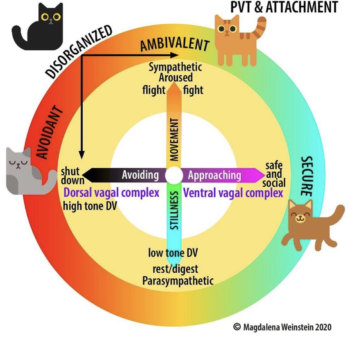
Avoidant
Similar to the benefits of taking vitamins for our health, Contact Nutrition is the formula of helping us feel connected. I first learned this from Carmen Spagnola who studied with Diane Poole Heller. There are 5 vitamins to practice: Kind Eyes, Soft Voice, Safe Touch, In Tune Rhythm and Shared Meals. So, when you are starting to feel the pull away from someone, see if you can track their eyes, voice, or reach out and touch them. Try sharing a meal with them and track how your body feels in this communal ritual.
Another way to help stay regulated and centred when it feels too much is to self-soothing resources like Orient to the Space or Find Your Edges. Both are breath exercises that look at your space externally and internally. I love this resource when i am starting to feel overwhelmed in a busy space. I contact a painting or item and then find its edges. I breathe more intentionally, i sigh out a sense of relief and calm. Other steps are breathing out the sound of Voo (a resource from Peter Levine) or saying “I am Safe, I am Home” softly to yourself. This is how we soften our bodies so that we can stay with someone longer. People who have an Avoidant Attachment Style have hyperboundaries and are rigid because they fear becoming engulfed or enmeshed with someone else. So we are trying to thaw and self-regulate before falling into a Functional Freeze State.
It’s important to acknowledge here that when we talk about healing our attachment styles and relationships, i am NOT talking about staying in an abusive relationship or reconciling with someone who hurt you. The repair work can happen with other people. Self-Compassion work can be radical because it reminds you of your dignity and right to live free of fear of someone hurting you. It also means treating others with that same respect and care. It is about having grace for mistakes and learning that repair after ruptures are key ways to heal attachment wounds.
DisorganizedIf you have experienced family violence or partner abuse, it may seem hard to think of someone who has been a support to you. It may feel challenging to trust someone again. One resource that can be helpful is to create one. This is a Competent Protector (something i also learned from Carmen). Have you seen any of these old movies when a doll, mannequin or statue comes to life? It’s a bit like that. While similar to a Recalled Resource or Attachment Village, this resources is one that is created and more of an internal resource. Think of what qualities or traits would be important to you. Think of consistent care examples in others that you know personally or have seen on TV. I also like to blend parts of people i admire or feel safe with and put them into this creation.
After creating this Protector, spend some time in their presence. Do a self-guided visualization and see what happens in your body. Place your hand over your heart and do some Vagal Breaths. In Narrative Therapy, there is a similar resource called the Recalled Resource. This is an intentional practice of recalling someone who was an example of a secure attachment, even if temporary. Maybe it was a teacher, or a family friend, or even your family pet or stuffie.
Speaking of which, if it seems hard to think of another human, don’t start with one – people can can be assholes. Instead, think of how you feel in community with a favourite tree, in a swing, or with your pet now. Some of my favourite Competent Protectors of being in the water (a lake or ocean especially) or sitting under the Full Moon.
One other way to work on healing this attachment style is to reach out to a therapist. This resource can help you feel more anchored and get to a felt sense of stability. Therapy sessions are not real life, so they are a great way to practice in vivo. This is especially powerful if a rupture happens with your therapist, and you can repair the therapeutic alliance in a safe way.
Attachment wounds happen in relationships so we need to heal in secure relationships in the present. The first steps are trusting we are worthy of right relationships, building our capacity to stay within our Window of Presence and take some risks.
You’re worth it.


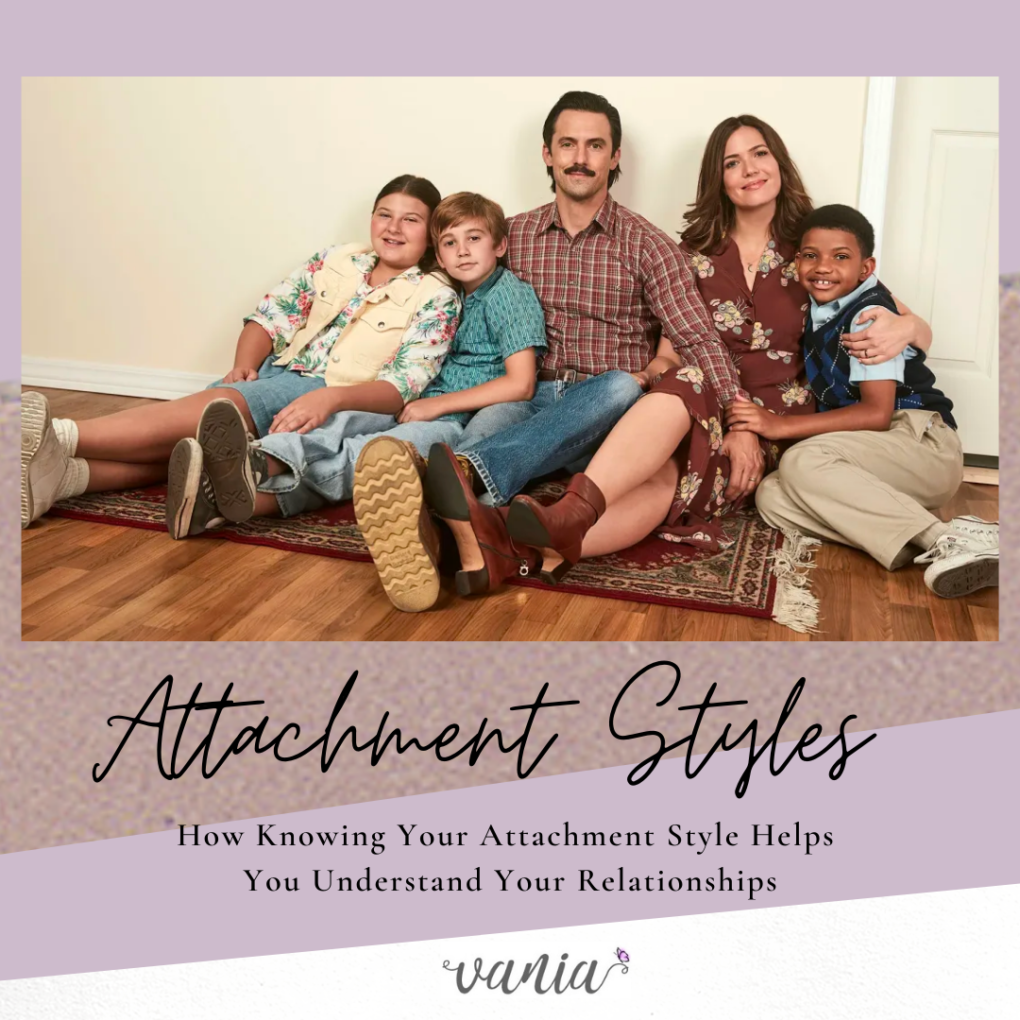
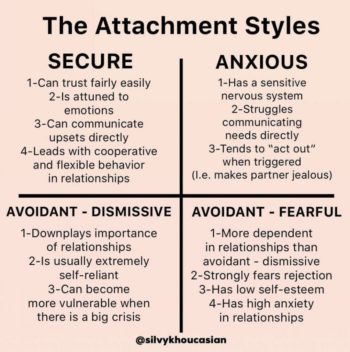
 Our attachment styles are formed in childhood, and take years to fully develop into any style. When we become adults, that original style typically stays present as our current relationships reinforce it. Or, we heal or shift our attachment style. Some people heal old attachment wounds and form healthy secure attachments with their partners or friends; others get stuck in abusive unhealthy relationships that put cracks in their formerly secure attachment.
Our attachment styles are formed in childhood, and take years to fully develop into any style. When we become adults, that original style typically stays present as our current relationships reinforce it. Or, we heal or shift our attachment style. Some people heal old attachment wounds and form healthy secure attachments with their partners or friends; others get stuck in abusive unhealthy relationships that put cracks in their formerly secure attachment. 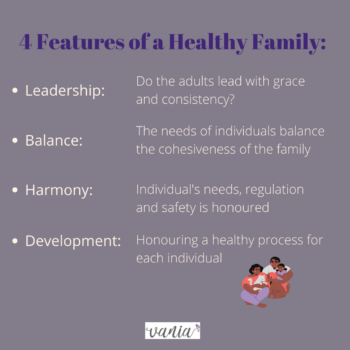 Just like personality, delinquency is not connected to attachment all the time – risk taking is necessary for adolescence development. It’s when someone becomes more anti-social that is linked to attachment needs not being met.We have learned through research about childhood and adolescent resilience that children typically respond to adversity in three different ways: Promiscuous and Risk-taker, the Perfect Child, or Withdrawing to be Invisible.
Just like personality, delinquency is not connected to attachment all the time – risk taking is necessary for adolescence development. It’s when someone becomes more anti-social that is linked to attachment needs not being met.We have learned through research about childhood and adolescent resilience that children typically respond to adversity in three different ways: Promiscuous and Risk-taker, the Perfect Child, or Withdrawing to be Invisible. 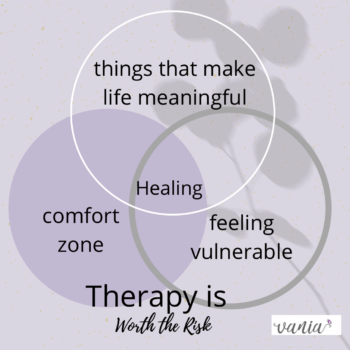
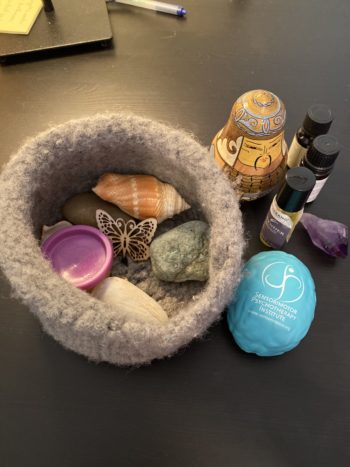
 During times of crisis, we need connection not distance. In order to stay healthy, our minds and body need to feel safe. So, while we need to remain physically distance in order to flatten the curve of this pandemic, we still need ways to feel interconnected. We are social creatures as mammals. While we know with a rational mind that we need to be safe (in this case, from the Coronavirus), we also know we feel safer when in closeness to others. Our pack mentality needs to be comforted. Throughout our life, we keep trying proximity-seeking actions in order to access our social engagement system which helps connect with our parasympathetic nervous system. Things like facial expressions, orienting, eye contact, speaking, or crying are very helpful to engage this part of you. As babies, these cues were the indicators of how we could attach to our caregivers.
During times of crisis, we need connection not distance. In order to stay healthy, our minds and body need to feel safe. So, while we need to remain physically distance in order to flatten the curve of this pandemic, we still need ways to feel interconnected. We are social creatures as mammals. While we know with a rational mind that we need to be safe (in this case, from the Coronavirus), we also know we feel safer when in closeness to others. Our pack mentality needs to be comforted. Throughout our life, we keep trying proximity-seeking actions in order to access our social engagement system which helps connect with our parasympathetic nervous system. Things like facial expressions, orienting, eye contact, speaking, or crying are very helpful to engage this part of you. As babies, these cues were the indicators of how we could attach to our caregivers. 